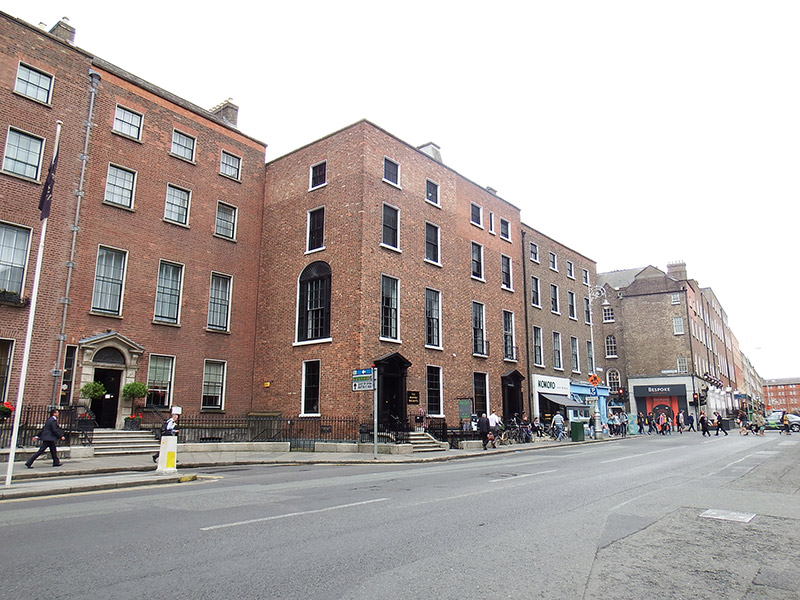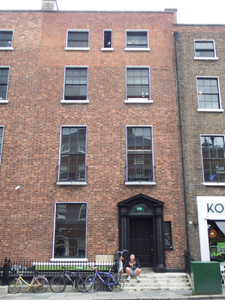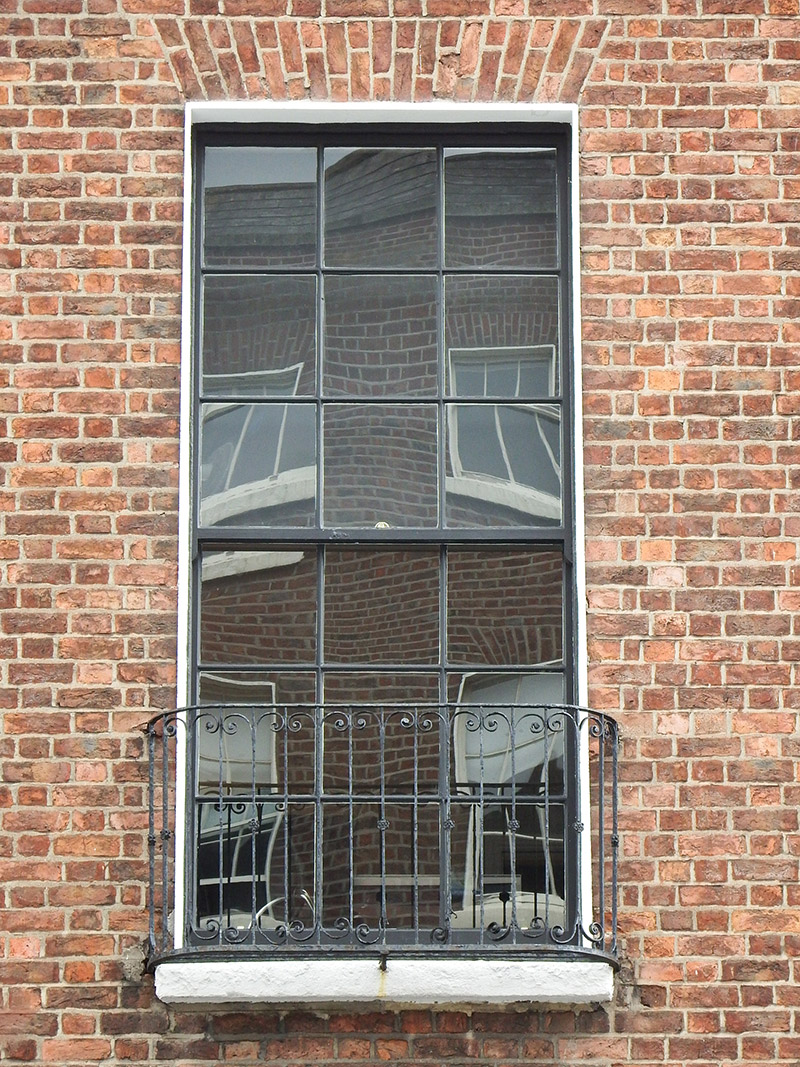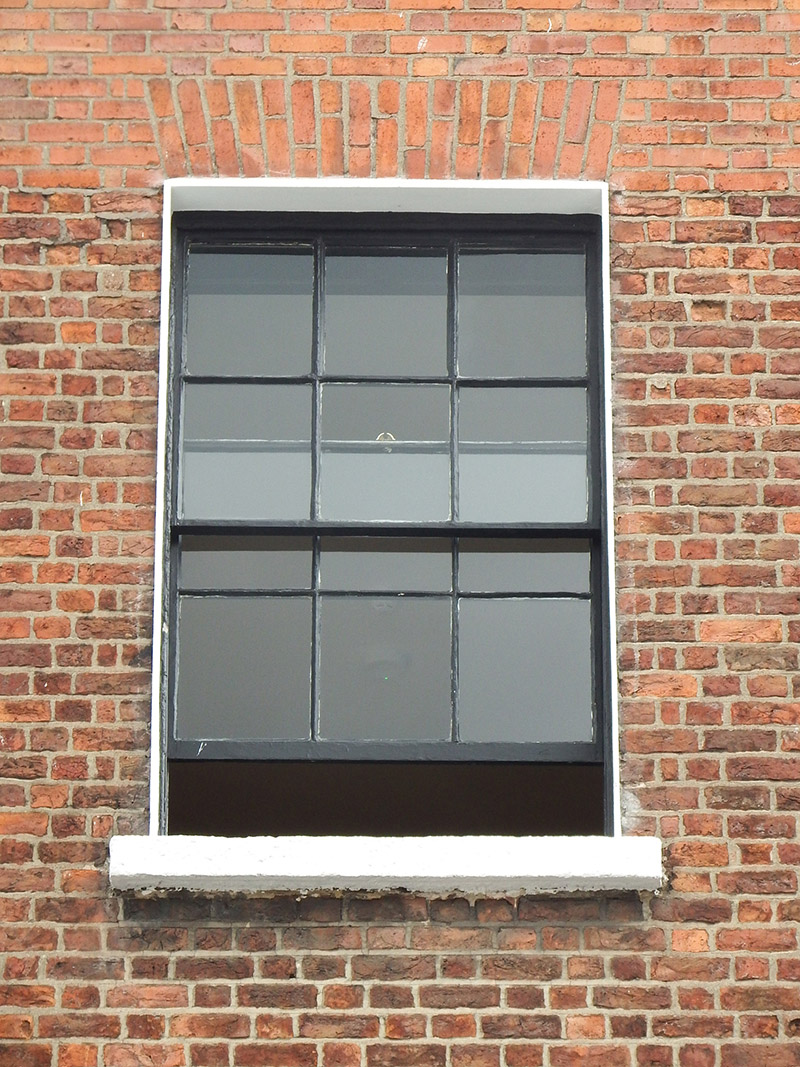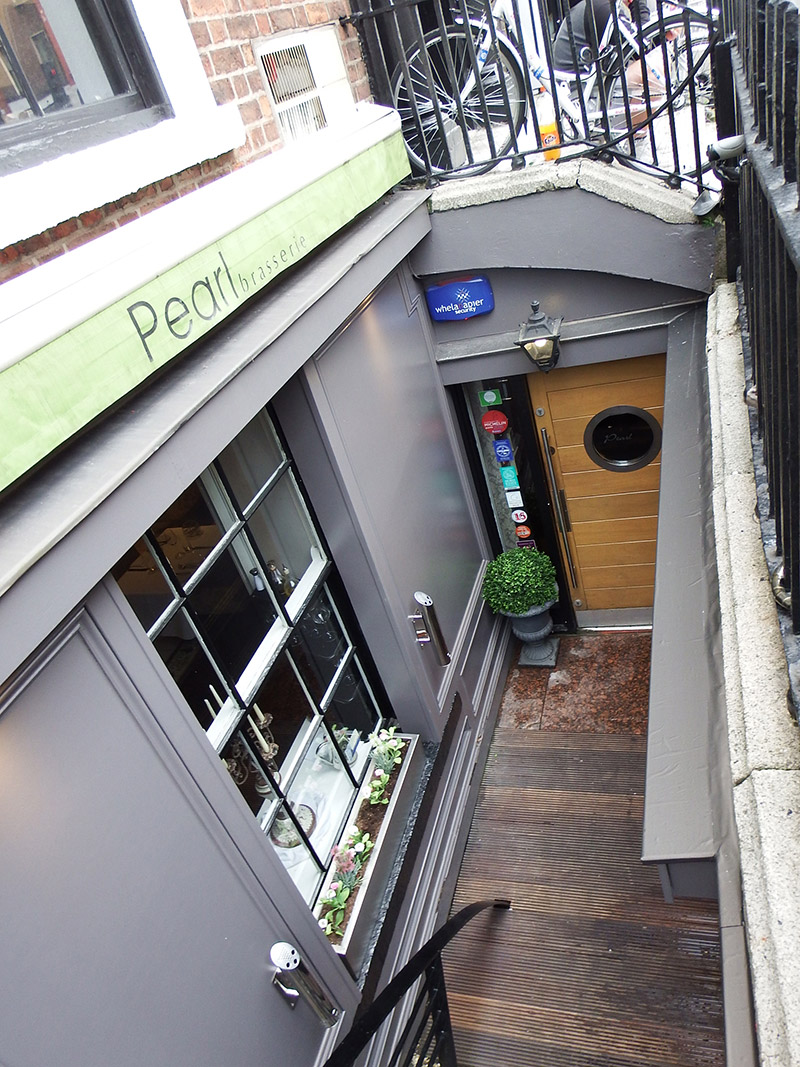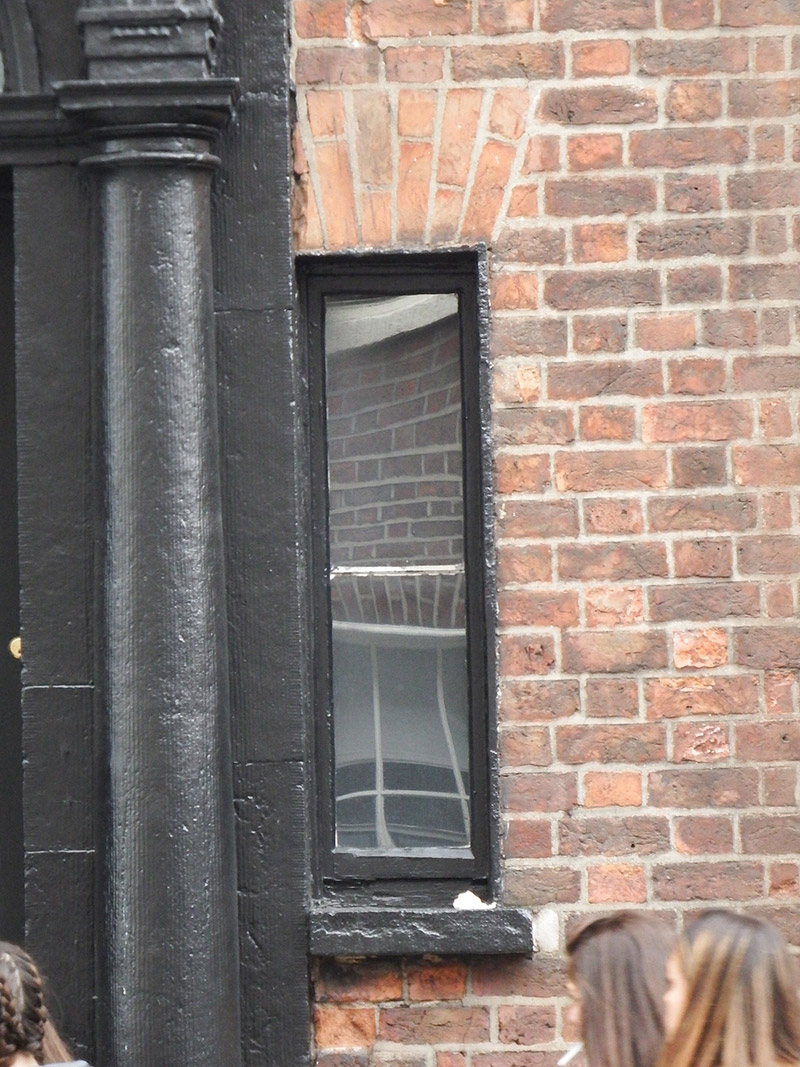Survey Data
Reg No
50100450
Rating
Regional
Categories of Special Interest
Architectural, Artistic
Original Use
House
In Use As
Office
Date
1775 - 1805
Coordinates
316403, 233399
Date Recorded
28/07/2016
Date Updated
--/--/--
Description
Attached two-bay four storey former house over basement, built c. 1790 as one of pair with No. 20, having single-storey building to rear of plot. Currently in use as offices, with restaurant to basement. M-profile pitched slate roof, hipped to south end, behind red brick parapet with masonry coping. Long unpainted rendered chimneystack to party wall with No. 20 with masonry coping. Concealed rainwater goods. Flemish bond red brick walling to front elevation, refaced in redder brick above second floor window head level on moulded masonry plinth over basement walls having recent timber panelled cladding; yellow/brown brick walling to rear, rebuilt in red brick above top floor window head level; rendered to south elevation. Square-headed window openings, diminishing in height to upper floors, with painted masonry sills and patent reveals. Replacement timber sliding sash windows with convex horns, nine-over-nine pane to ground and first floors, six-over-six pane to second floor and basement, and three-over-three pane to top floor, with intrusive narrow side-hung timber casement between top floor window openings; apparently timber sash windows to rear. Front elevation has decorative wrought-iron balconettes to first floor. Painted masonry entrance doorcase, having square-headed door opening, engaged Doric columns with triglyphed frieze, open-bed pediment, plain fanlight and replacement eleven-panel timber door, with later sidelight having fixed timber window. Granite entrance platform with four granite steps to street. Shared basement area enclosed by wrought-iron railings with decorative cast-iron corner posts on granite plinth. Steel steps and recent timber door to basement.
Appraisal
A late eighteenth-century Georgian house, built as a pair with No. 20 to the north. The basement level has been recently altered with timber-panelled cladding and amalgamated with No. 20, but despite the insertion of some replacement fabric, the overall character of the house is largely retained. The building displays elegant proportions, good setting features and a fine pedimented doorcase. Construction of Merrion Street began in the early 1750s, following the completion of Kildare (now Leinster) House. In 1762, when Merrion Square was laid out, the middle portion of the street became the west side of the square. The plots of Nos. 19-20 are shown as undeveloped on Rocque's updated map of 1773 and were therefore these houses were built later than the adjoining houses to the north. Despite alterations in recent decades, No. 19 makes an important contribution to the early streetscape character and architectural quality of this part of the south city Georgian core on a street that has been fairly well retained.
